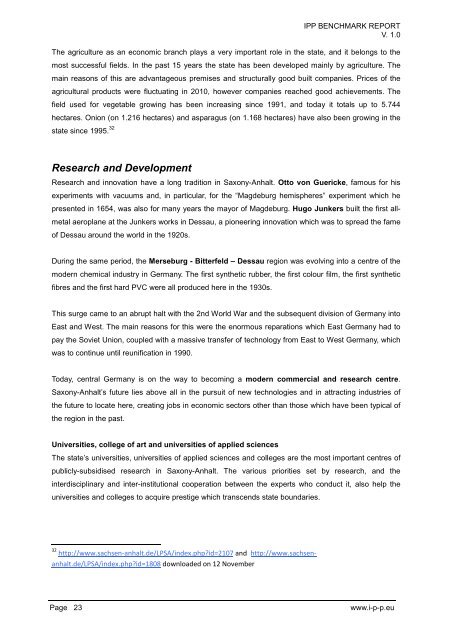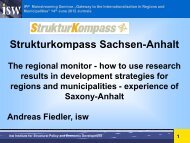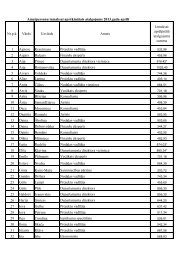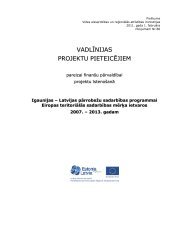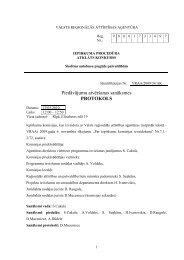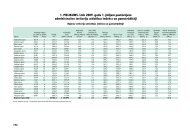Benchmark Study 1
Benchmark Study 1
Benchmark Study 1
You also want an ePaper? Increase the reach of your titles
YUMPU automatically turns print PDFs into web optimized ePapers that Google loves.
IPP BENCHMARK REPORT<br />
V. 1.0<br />
The agriculture as an economic branch plays a very important role in the state, and it belongs to the<br />
most successful fields. In the past 15 years the state has been developed mainly by agriculture. The<br />
main reasons of this are advantageous premises and structurally good built companies. Prices of the<br />
agricultural products were fluctuating in 2010, however companies reached good achievements. The<br />
field used for vegetable growing has been increasing since 1991, and today it totals up to 5.744<br />
hectares. Onion (on 1.216 hectares) and asparagus (on 1.168 hectares) have also been growing in the<br />
state since 1995. 32<br />
Research and Development<br />
Research and innovation have a long tradition in Saxony-Anhalt. Otto von Guericke, famous for his<br />
experiments with vacuums and, in particular, for the “Magdeburg hemispheres” experiment which he<br />
presented in 1654, was also for many years the mayor of Magdeburg. Hugo Junkers built the first allmetal<br />
aeroplane at the Junkers works in Dessau, a pioneering innovation which was to spread the fame<br />
of Dessau around the world in the 1920s.<br />
During the same period, the Merseburg - Bitterfeld – Dessau region was evolving into a centre of the<br />
modern chemical industry in Germany. The first synthetic rubber, the first colour film, the first synthetic<br />
fibres and the first hard PVC were all produced here in the 1930s.<br />
This surge came to an abrupt halt with the 2nd World War and the subsequent division of Germany into<br />
East and West. The main reasons for this were the enormous reparations which East Germany had to<br />
pay the Soviet Union, coupled with a massive transfer of technology from East to West Germany, which<br />
was to continue until reunification in 1990.<br />
Today, central Germany is on the way to becoming a modern commercial and research centre.<br />
Saxony-Anhalt’s future lies above all in the pursuit of new technologies and in attracting industries of<br />
the future to locate here, creating jobs in economic sectors other than those which have been typical of<br />
the region in the past.<br />
Universities, college of art and universities of applied sciences<br />
The state’s universities, universities of applied sciences and colleges are the most important centres of<br />
publicly-subsidised research in Saxony-Anhalt. The various priorities set by research, and the<br />
interdisciplinary and inter-institutional cooperation between the experts who conduct it, also help the<br />
universities and colleges to acquire prestige which transcends state boundaries.<br />
32 http://www.sachsen-anhalt.de/LPSA/index.php?id=2107 and http://www.sachsenanhalt.de/LPSA/index.php?id=1808<br />
downloaded on 12 November<br />
Page 23<br />
www.i-p-p.eu


